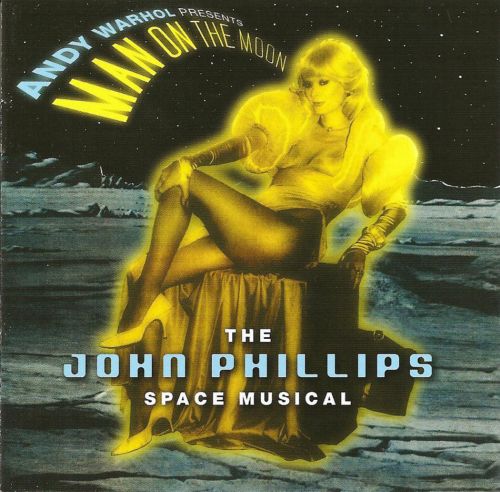

includes 2 video files
Andy Warhol Presents Man on the Moon is one whopper of an oddity in the annals of '70s music and theater. It is perhaps the most complex, diverse, and utterly strange recorded offering in the musical biography of John Phillips. Conceived after the Apollo 11 moon landing in 1969 as a theatrical and cinematic work by Phillips, he spent half a decade trying to realize a production that began in the Southern California with numerous producers, directors, and costumers. He eventually ended up in the hands of Andy Warhol, who hired Paul Morrissey as director; Morrissey was fired by Richard Turley in favor of a more experienced Broadway director. The show opened at the Little Theater on Broadway and closed five days later amid disastrous reviews. Phillips' other motivating factor here was creating a musical work as a vehicle for his wife, Genevieve Waite (whose unconventional voice was always a controversy in the realization of this production, but one has to wonder why, in retrospect). He was trying to develop her as a singer in her own right -- which never really happened on any major scale though she did record an album in the '70s. Originally conceived as a musical around the theme of global brotherhood, its plot consisted of a notion that the space mission left a giant bomb on the moon that could annihilate the entire universe. A space mission by an international collective of astronauts and scientists were to head to the moon to defuse it.
Yes, it sounds crazy, and it was perhaps. Yet the music left behind is anything but. What exists on the album is a whopping 38 tracks, the vast majority of them recorded in finished form by Phillips with a small but very effective backing band in places. There are also a handful of cuts with Waite performing as Angel, the female principal in the production, a few outtakes, five audience recordings from the actual Broadway performances, some video footage, and a .pdf file that includes the playbill and other oddities. Phillips' music is written in an earlier American style, ranging from something like late Vaudeville and early Broadway to contemporary folk music. Despite some of the deliberately campy aspects in some of the songs, the dreams of John Phillips are contained in songs such as "Truth Cannot Be Treason." In essence, this is for fans of the Phillips' solo recordings only, but that doesn't make it bad music; far from it; much of what is here is beautiful, haunting, wonderfully naive, and utterly canny in its cultural critique. For any Phillips' fan this set is utterly worth owning. This is early-'70s post-hippie pessimism (that the planet Earth could actually sustain life much longer) at its best.